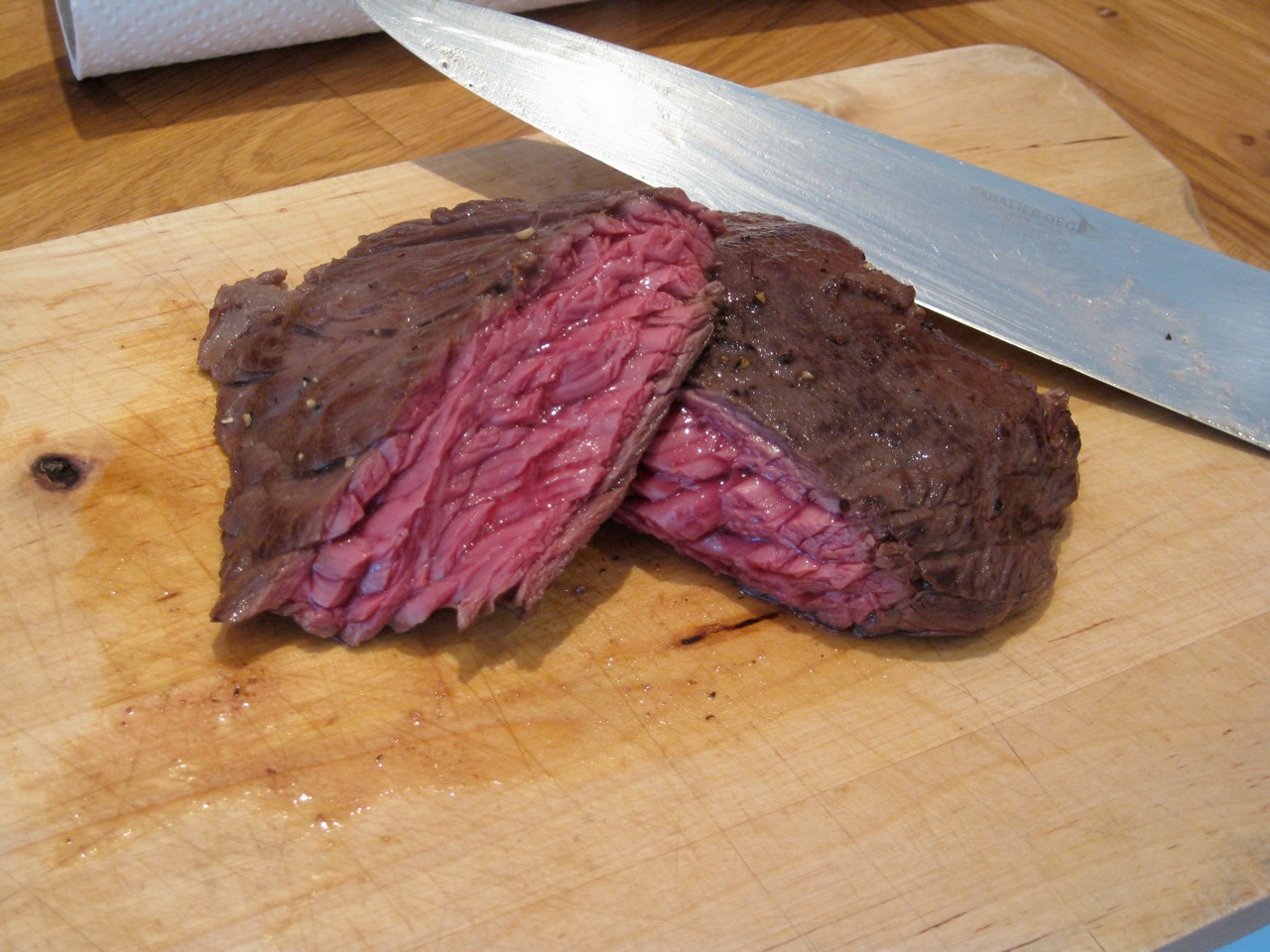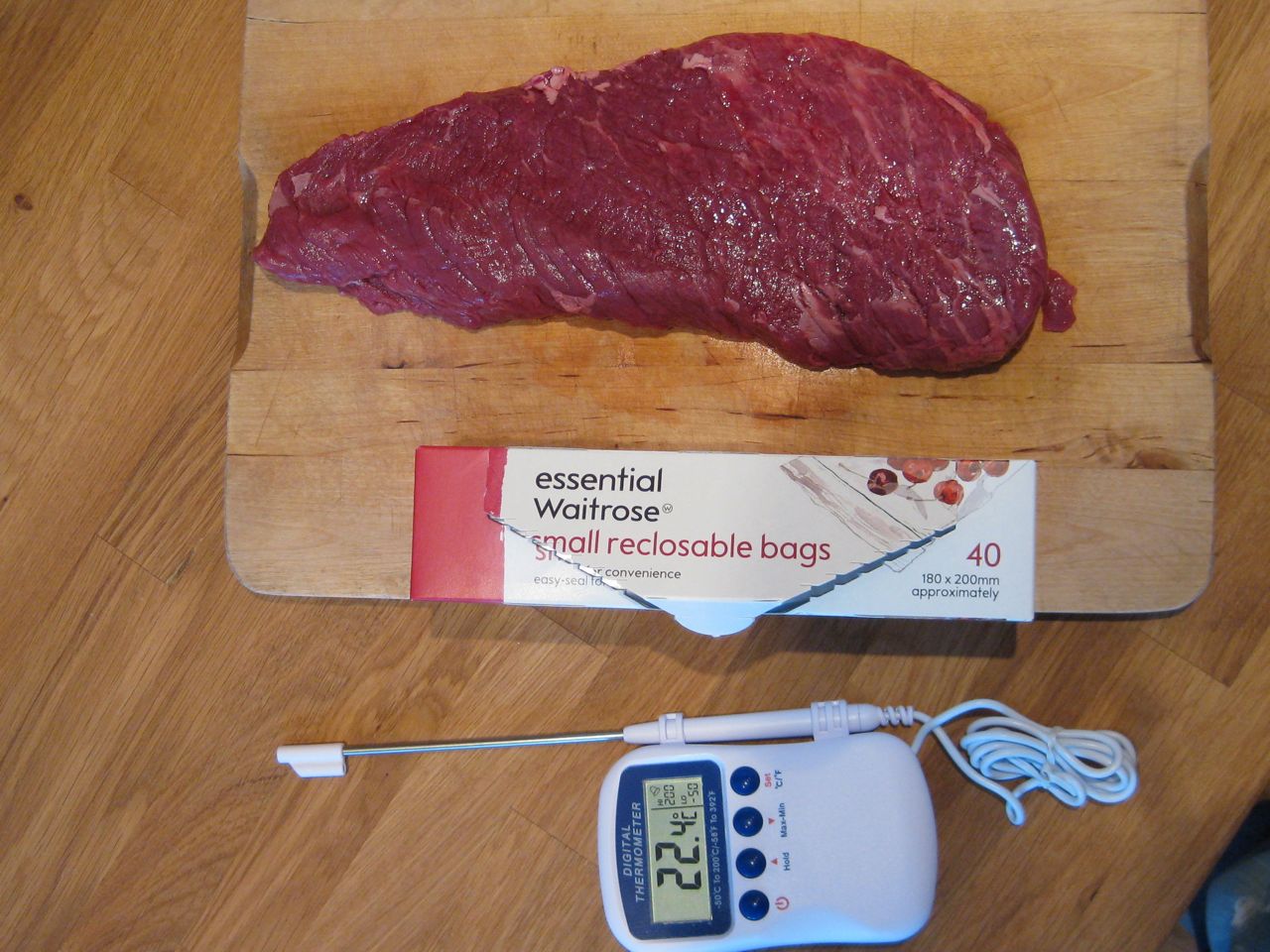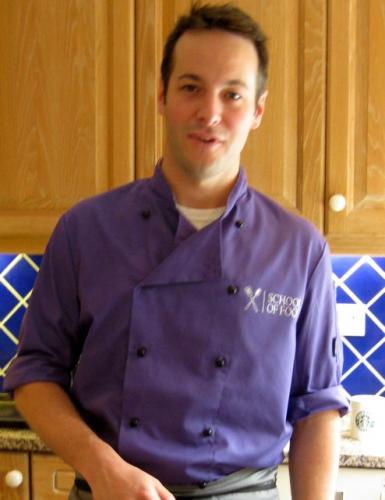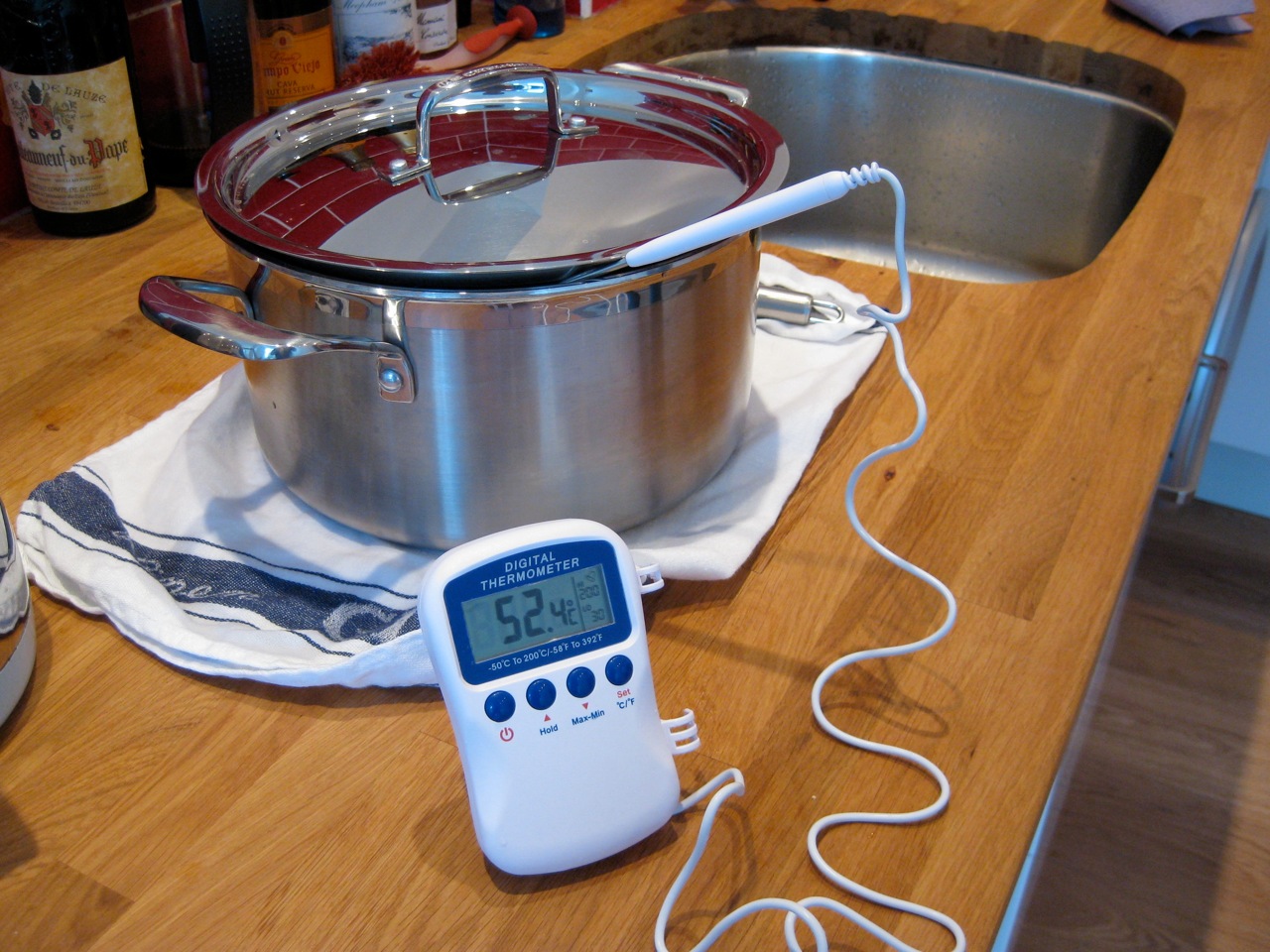 Is sous vide the cooking method of choice for the terminal pedant, or a guaranteed route to perfectly cooked food? Whatever your view, this unusual method looks set to make the jump from professional to home kitchens sooner or later.
Is sous vide the cooking method of choice for the terminal pedant, or a guaranteed route to perfectly cooked food? Whatever your view, this unusual method looks set to make the jump from professional to home kitchens sooner or later.
Sous vide – literally under vacuum – is the packaging of ingredients in a vacuum-sealed bag then cooking them in a water bath at a teutonically precise temperature. Alex Renton wrote a great Guardian WOM piece explaining the benefits: food cooks totally evenly, without high heat damaging flavours. Long cooking breaks down toughness leaving meats incredibly tender, and the bag prevents any flavours escaping. There is just one little problem. Or rather 500 to 1,000 problems plus VAT – the cost of a temperature controlled water bath and vacuum sealer.
But does sous vide cookery have to be expensive? A US movement, popularised by David Chang’s Momofuku Cookbook and its steak-under-a-hot-tap recipe (UK publication in October), is dedicated to improvising sous vide techniques. Known as ghetto sous vide, fans use ziplock bags, cheap thermometers and warm water to cook meat, fish and vegetables. I wanted to try this myself – hey, what could possibly go wrong? The equipment was simple: a digital probe thermometer cost £12 and I found zip seal bags in a drawer. Marky Market provided some top-grade onglet and my stock pot acted as makeshift bath. The method too was simple: portion the meat, pop each portion in a bag, squeeze out the air and seal the bag. Squeezing out all the air was tricky (but important as air is a poorer conductor of heat than water so would cause uneven cooking) but partially submerging the bag in water then sealing the top helped.
 The bagged meat was submerged in warm water to cook – a degree warmer than the desired temperature of the meat when cooked. Onglet likes to be rare, so my water temperature was 52°C (water from the hot tap, topped up with the kettle, but accurately measured with the thermometer). The bagged beef stayed in the water until it had an internal temperature of 51°C which took 45 minutes. Anytime the water dipped below 52°C (3 or 4 times) I added some more from the kettle – a low-temperature alarm on the thermometer made it easy to get on with something else rather than constantly monitoring.
The bagged meat was submerged in warm water to cook – a degree warmer than the desired temperature of the meat when cooked. Onglet likes to be rare, so my water temperature was 52°C (water from the hot tap, topped up with the kettle, but accurately measured with the thermometer). The bagged beef stayed in the water until it had an internal temperature of 51°C which took 45 minutes. Anytime the water dipped below 52°C (3 or 4 times) I added some more from the kettle – a low-temperature alarm on the thermometer made it easy to get on with something else rather than constantly monitoring.
Finally the steaks were removed from the bags, dried with a towel, seasoned, then seared in a hot, dry pan for a few seconds. Fresh from the bath the outside of the meat had an unappetising colour – grey and insipid, in fact – but the searing gave a tasty brown colour and got some Maillard flavours going.
The outcome? Delicious, especially with spuds, green beans and horseradish. The beef was rare – totally evenly cooked all the way through, with none of the toughness around the edges you get with grilled onglet. The short cooking meant the meat was not massively tenderised nor absent of sinew – that requires several hours in the bath – but it was notably better than a grilled steak. And the meat texture was totally different to a grilled steak: the characteristic grainyness of this cut remained loose after cooking, rather than tightening up – not necessarily good nor bad, but definitely different, and quite unusual. All things considered, this experiment was a big success.
Would I do anything differently? Well, I’d love to try to really tenderise the meat with long cooking – probably 8 to 12 hours. That said, longer cooking involves different issues in terms of food hygiene, so at this temperature you either need to cook relatively fast (as above) or for a really long time, but not for an in-between period like 2 or 3 hours. I expect I will try it, but I also suspect regular long cooking – and all the attendant fiddling with maintaining temperature – might be where that devilishly expensive sous vide equipment starts to look more attractive.
Specialised sous vide equipment will eventually fall in price; the components are cheap and already used in plenty of kitchen appliances. When that happens I will definitely do some ‘proper’ sous vide. Until then you will find me playing with my ziplocks and thermometer.
Have you tried ghetto sous vide? How did you get on? Would you try it?
*****
Safety note: This cooking method might sound like a recipe for botulism – but it is not as dodgy as it sounds. Plenty of sous vide cookery is totally safe, but a short cooking time like the one above does entail risks above normal steak-cooking methods.
Don’t try the method above unless you have educated yourself about the food safety risks and are willing to accept them. And if you do, remember, the meat can’t be kept and reheated later. It goes without saying to use an excellent meat supplier, and not serve it to anyone old, young, pregnant, ill or with a compromised immune system. We can’t go into a detailed sous vide safety discussion here, but this site is a good place to start.
Alastair Instone runs School of Food, and is @alinstone on Twitter.


By coincidence I prepared MarkyMarket onglet by sous-vide a few weeks ago. Excellent: the longer cooking makes it butter soft.
Cooking Issues has some excellent primers on sous vide cooking. Sous Vide and Low Temp Primer Part II: Cooking without a vacuum has some excellent advice on how to use double-seal bags and exclude air efficiently if people don’t have an appropriate sealer.
I don’t like sous vide as a method for cooking beef. I want my meat to have a bit of bounce and bite, otherwise I might as well be eating soft butter.
I’d definitely give this a go, the steak looks so good. I’m a big fan of low and slow – often cook whole a leg of lamb (again, Marky Market) at gas mark 1 for 7-8 hours which raises the whole temp rather than different levels of ‘doneness’ from outside to in, then a quick burst in a hot oven to crisp the outside and an hour’s resting time.
Just for giggles, here’s Heston Blumenthal cooking a whole pig sous-vide in a hot tub http://www.eatmedaily.com/2009/03/the-trojan-hog-on-hestons-roman-feast-video/
Pingback: Student cooking: making a lot of a little – EdConnect
Pingback: Student cooking | Daily Tribune
Pingback: Materia Condensada. Cuinar Ciència. (Condensed Matter. Cooking Science) « Moonraker Morsels
nice to see a blogger hard at work if you tweet add me @favoriterecipe
Hey,
I just watched a episode of “Heston’s Mission Impossible” where he attempts to change the eating habits of an entire crew aboard HMS Turbulent (Nuclear Powered Royal Navy Sub)….. Good luck there then !!
Mission Impossible this definatley was but, after a couple of failed attempts he managed to totally change the minds of all the Sailors by using the “sous vide” method to cook the food.
This not only changed the taste of the food (radically) for the better but, it also solved a problem in terms of storage. By vaccum packing the pre prepared foodstuffs and then cooking them ready for use aboard the Sub, it saved a huge amount of space.
you can watch the program here : http://www.channel4.com/programmes/hestons-mission-impossible/4od#3170300
Enjoy
———————————————————————————————
Are looking for Bargain deals on Catering Equipment and Commercial Refrigeration?